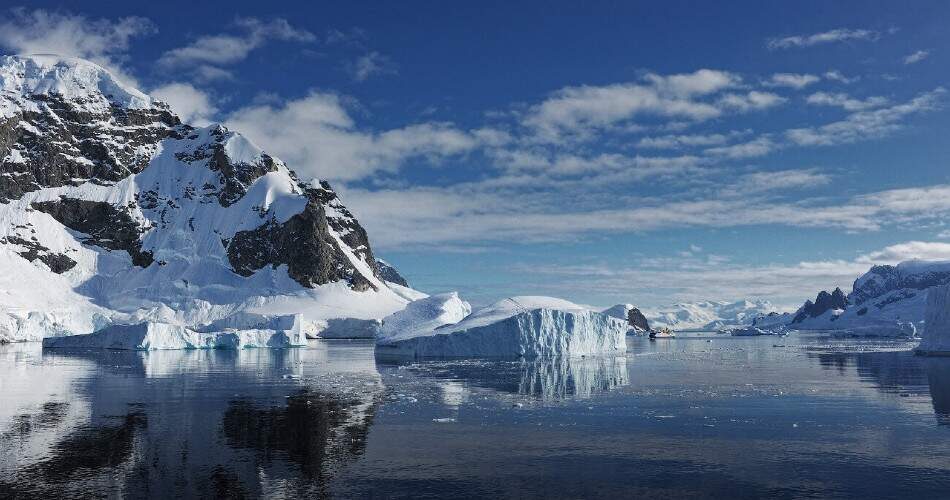Estimated reading time: 4 minutes
Climate and soils
The Antarctic climate is characterized by being very cold, dry, and windy, which largely limits the development of life forms. The process of decomposition of the rock which, thanks in principle to the bacteria and algae, generates a basic flora on a mineral soil, can not take place in these regions.
However, the Antarctic Peninsula and some coastal areas have more snowfall and therefore have richer and more humid soils. Precipitation concentrates the minerals and forms reservoirs allowing the plants to find the necessary water during the summer period. In these areas, we observe algae, lichens, and mosses contributing to greater soil richness. In addition, guano (fecal matter of penguin colonies and other birds) is in some cases an excellent fertilizer land.
Plants
Due to harsh climatic conditions and poor soils, Antarctica has a small amount of plant and animal species: 360 species of algae, 400 species of lichen, 75 species of moss but no ferns. Only two plants bloom in the warmest region of the Antarctic Peninsula: Antarctic hair grass (Deschampsia Antarctica) and Antarctic pearlwort (Colobanthus quitensis). All plants in the region grow slowly and only a few species measure more than 3 centimeters. In fact, the only terrestrial herbivores are small insects and mites.
An abundant marine life
Contrary to what one might think once these first observations have been made, animal life abounds in the waters surrounding the southern continent. A large number of migratory seabirds and marine mammals are found on its coast from the end of October to the beginning of March, then floating on ice during the rest of the year.
The biological productivity of Antarctic waters is the largest on the planet. This is due to three factors: first, the water is cold and gases such as carbon dioxide are better dissolved than in warm tropical waters. This results in more oxygenated water. Secondly, seas stirred by strong currents keep most of the nutrients such as phosphates, nitrates and suspended minerals where they are easily used by phytoplankton for growth. Finally, the long hours of light during the summer months allow an almost continuous photosynthesis.
Adapt to the cold
In Antarctica, both marine and terrestrial fauna face an extremely harsh climate at very cold temperatures. There are two types of animals: those whose internal temperature varies with the external temperature and those whose internal temperature remains relatively constant.
Birds and mammals are of the second type. They are able to maintain an optimal body temperature despite the cold. This means that their vital processes such as digestion, nerve transmissions and muscle contractions are carried out efficiently but at a high metabolic cost. They then have various tools to protect themselves from the cold: plumage, fat and fur.
Plumage in birds
Birds use two techniques to prevent heat loss. First of all, the air. It acts as an effective insulator around the body of the bird that holds it with its feathers and the position of its wings.
Secondly, most Antarctic birds have a gland at the base of the tail whose secretions, once distributed over the plumage, make it impermeable. As for their legs and beak, they have no or few blood vessels thus avoiding body cooling in contact with water or frozen ground.
Penguins are aquatic birds that have developed plumage with the most effective insulating properties against water, wind and cold. Its density makes it extremely compact and superimposed on the subcutaneous fat of the animal, it allows them to fight against low temperatures and to cope with long periods of fasting (during the breeding cycle for example).
Their feet have more blood vessels that they dilate on the ground to distribute the heat and contract at sea to avoid too much loss. You will notice that some species have pink feet on the ground and white when they come out of the water.
Mammal fat
All living mammals in Antarctica are aquatic animals. Cetaceans (whales and dolphins) protect themselves from heat loss through a thick layer of fat. Like the penguin, it presents the double interest of acting as an excellent insulator but also of storing energy to survive during periods of fasting or migration.
In order to maintain their body temperature these animals consume more food. In winter their consumption is on average 50% greater than in summer but harder to find. This is the reason why cetaceans and most seals and seabirds migrate to other milder latitudes during the Antarctic winter.
Only penguins and some seals live there all year long. They exchange coastal areas where they spend the summer for floating ice in winter. The Weddell seal is the only one to spend all year on the coast. It takes advantage of holes in the ice in winter to hunt and breathe during the dive.
Fur mammals
Beyond the accumulated fat used to protect them from the cold, the so-called pinnipeds have a fur. They include three families of carnivorous mammals: sea lions, walrus and seals (including elephant seals). Their fur is such an insulator that it can maintain a high body temperature even several hours after the death of the animal.
If you want to find out about the animals in Antarctica, check out our article on this topic: What animals live in Antarctica?
[Photo from Pixabay]
